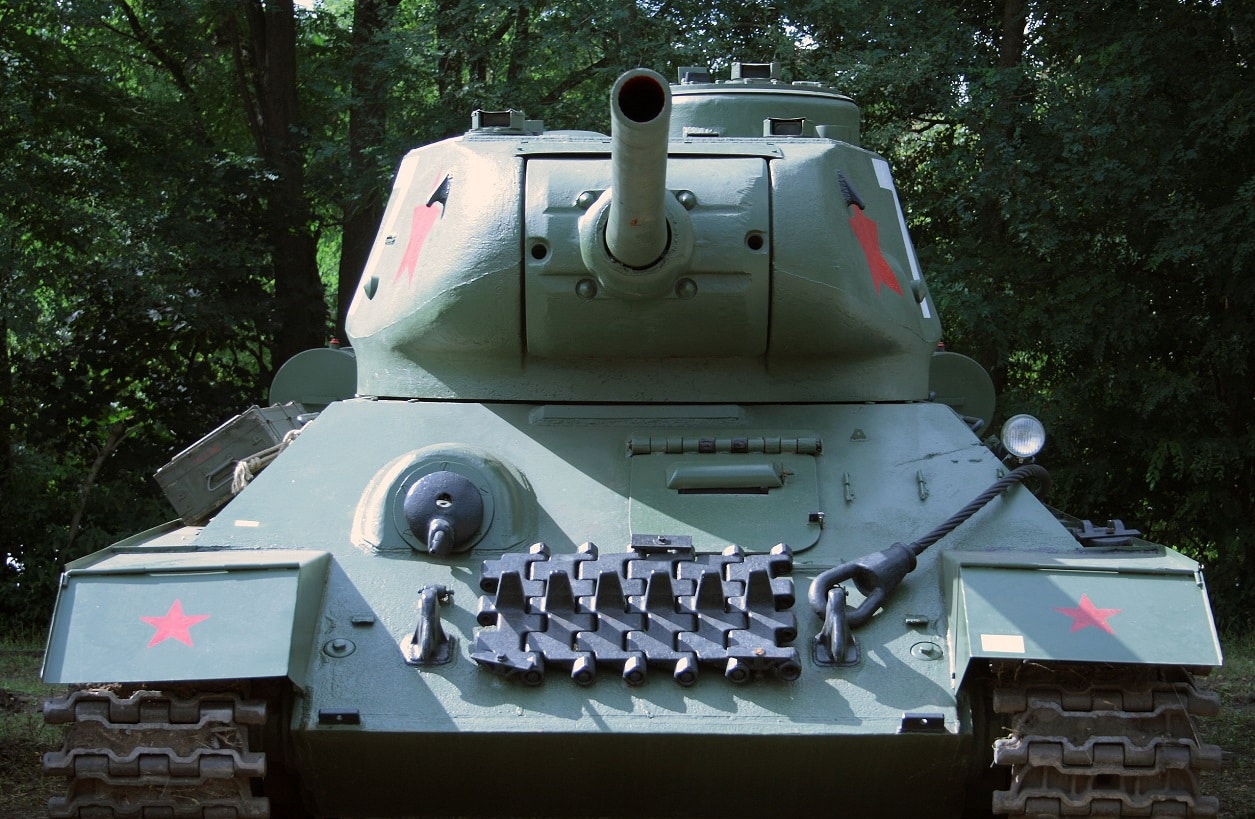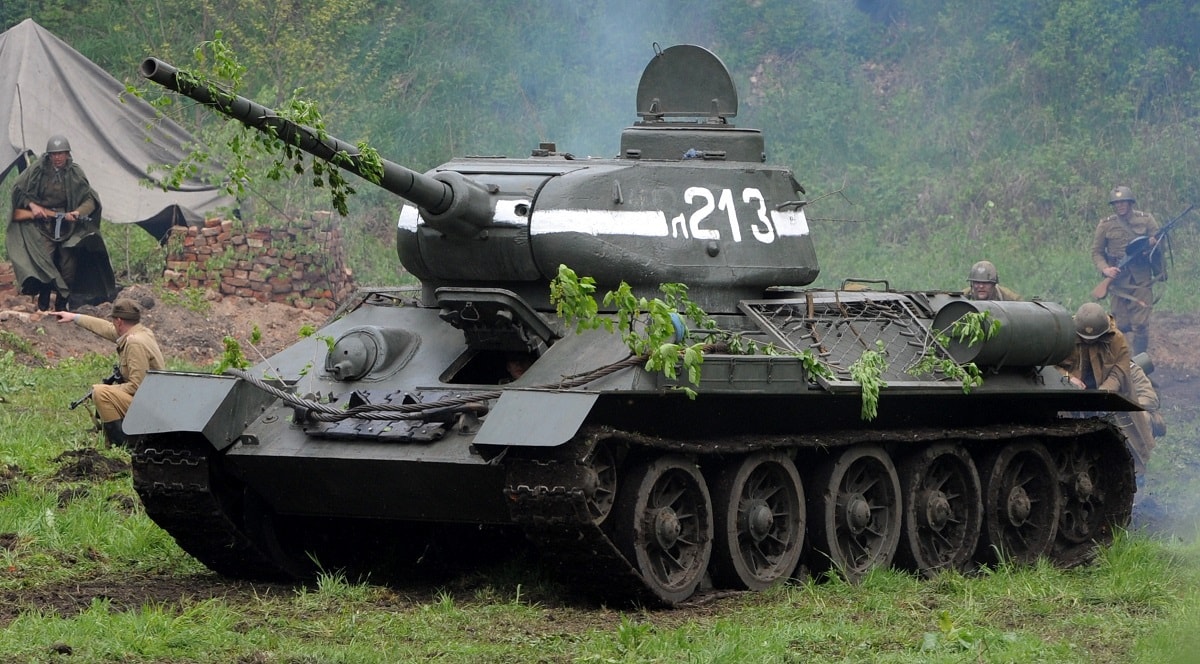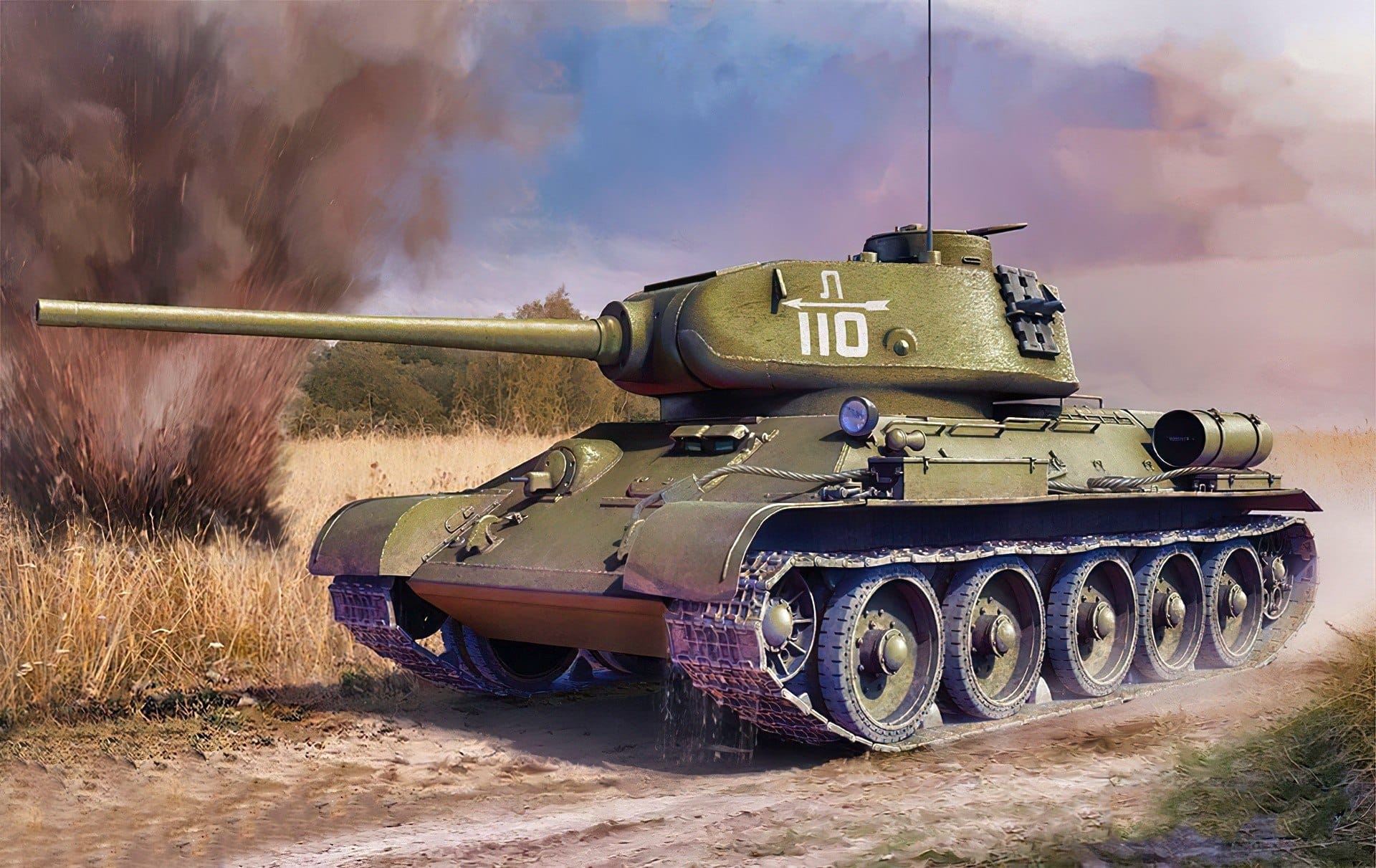Key Points and Summary: The Soviet T-34 is often credited with winning World War II, yet it was far from the best tank of the war. Compared to German heavyweights like the Tiger and Panther, the T-34 had weaker armor and firepower.
-However, Soviet industry churned out over 57,000 units, overwhelming German forces through sheer numbers.
-While Soviet propaganda immortalized the T-34 as a symbol of victory, its real strength lay in its mass production and ability to adapt.
-In the end, quantity—not quality—secured the Red Army’s march to Berlin, proving that a good-enough tank, produced in staggering numbers, can win wars.
T-34 vs. Tiger: How the Soviets Beat Germany With Sheer Numbers
If you were to ask tank experts which tank they thought was the most important in WW2, many would choose, or at least mention the T-34. Some would even go so far to say it might be the best tank ever.
Considered by some (especially in Russia) to be the tank that won WW2, the T-34 has gained near mythic status among tank historians.
Looking at the tank itself, however, raises the question whether this reputation is deserved. In terms of armor and firepower, the tank is rather unremarkable and when looking at tank on tank engagements, the casualties were always staggeringly in favor of the Germans.
Why then is the T-34 considered such a great tank?
The Birth of a Legend
Development for the legendary tank began in 1937 when designer Mikhail Koshkin at the Kharkiv Komintern Locomotive Plant (KhPZ) was tasked with replacing the ineffective BT series light tanks.
Lessons from the Battle of Khasan Lake against Japan, and the Winter War against Finland had exposed a number of flaws in existing Soviet tanks, poor welding quality, and the use of petrol engines among them.
Koshkin designed a tank with sloped armor, model V-2-34 diesel engine, heavier armor than any soviet tank at the time, and a 45mm cannon. After a prototype model was built, Koshkin himself drove the tank 2,000 km from Kharkiv to Moscow and then to Finland before returning back to Kharkiv.
The tank was accepted and produced in 1940 after which the 45mm gun was deemed ineffective and upgraded to a 76.2mm gun.
The newly accepted T-34 received a trial by fire when Nazi Germany launched Operation Barbarossa, invading the USSR.
At first, the armor on the T-34 proved effective, however German troops quickly figured out the week points on the tank and which weapons could pierce the armor. In short time, Soviet tank casualties began to grow higher and higher with reports that the Soviets lost 7 tanks for every one German tank loss.
As time progressed, Wehrmacht anti-tank strategies improved with more weapon shipments and eventually with the delivery of heavy tanks like the Tiger and Panther. Meanwhile, the Red Army was in poor state, suffering from lack of radios, poor morale, and incompetent tank tactics. Slowly however, the Red Army would adapt, upgrading the armor on the T-34 and drastically increasing production.
Victory at Stalingrad also provided the army with a much-needed morale boost. After victory in the Battle of Kursk, the T-34 received its final upgrade. Now fitted with a better turret and an 85mm gun, the T-34-85 would lead the charge that propelled the Red Army forward to Berlin.
History is Written by the Victors
Despite the outcome, when objectively rating the T-34s performance, the tank reveals to be underwhelming in many aspects.
Compared to German tanks like the Tiger or the Panther, the T-34 has lesser armor and firepower. The casualty lists reflect this as well. Throughout WW2, the USSR sustained a casualty ratio of about 7-to-1. In engagements against Tigers, the Tiger almost always came out on top.

T-34 Tank. Image Credit: Creative Commons.
Now we return to the question I posed at the beginning: why is the T-34 considered a great tank?
One reason is because the T-34 is the tank that reached Berlin. Soviet propaganda enflamed the T-34s reputation to that of legend.
Despite the staggering losses, the Soviets turned the tank into the symbol of their strength and victory and the legend persisted well after the war to this day.
When Quantity Beats Quality
There is, however, another aspect to the story that casualty numbers don’t quite capture, manufacturing. The Soviets were able to produce absurd numbers of T-34s with over 57,300 units built by the end of 1945 compared to 492 Tigers and around 3,000 panthers built by Germany.

T-34.
The Soviets made the harsh decision to simplify the production process to increase output as much as possible. The production figures speak for themselves.
In the end, while the T-34 was inferior to its German counterparts, the Soviets were able to field so many of them that the quantity closed the gap.
The T-34 was certainly not the best tank in the world, but it was exactly the tank the Soviets needed to win the war.
About the Author : Isaac Seitz
Isaac Seitz, a 19FortyFive Defense Columnist, graduated from Patrick Henry College’s Strategic Intelligence and National Security program. He has also studied Russian at Middlebury Language Schools and has worked as an intelligence Analyst in the private sector.

